
It’s 2:00 PM. You’re staring at your screen, and the words just start to… blur. Your focus is gone. That project you were crushing this morning now feels like climbing a mountain. You get this sudden, overwhelming wave of “brain fog,” and all you can think about is finding the nearest source of caffeine or sugar.
We’ve all been there. We call it the “midday slump,” and we usually blame it on a bad lunch, poor sleep, or just a personal failure of willpower.
But what if I told you that the 2 PM feeling isn’t your fault?
It’s not about “pushing through.” It’s a biological echo. It’s a predictable consequence of something that went wrong hours earlier: you failed to give your brain the one signal it desperately needs first thing in the morning.
And this isn’t some niche problem. A 2023 Gallup report found that 77% of workers are not actively engaged in their work. Think about that. That’s not just a big number; that’s us, sitting at our desks, feeling foggy, and just… disengaged. This lack of focus and engagement is estimated to cost the global economy a staggering $8.8 trillion.
The solution? It’s not another productivity app. It’s not a new supplement. It’s free, it’s outside, and it takes about five minutes.
The “Master Clock” That’s Running Your Life

Okay, so what’s really going on? Deep in your brain, you have a “master clock.”
No, really. It’s a tiny, densely packed cluster of about 20,000 neurons called the Suprachiasmatic Nucleus (SCN). Think of it as your body’s official, central timekeeper. It tells your liver when to process food, your immune system when to be active, and your brain when to be alert.
Here’s the catch: this clock isn’t perfect. It actually “drifts,” running on a cycle that’s slightly longer than 24 hours (about 24.2 hours, on average).
This means every single day, your clock must be reset. It has to be wound and anchored to the 24-hour day. How does it reset? It’s looking for one, all-powerful signal, a “time-giver” (the cool science term is zeitgeber).
And that signal is bright, morning light.
The 1-2 Punch That Creates All-Day Energy
When that specific kind of light enters your eyes, it does two critical things immediately. Think of it as your body’s non-negotiable “on” switch for the day.
1. It Flips the “Sleep” Switch OFF (Bye, Melatonin)
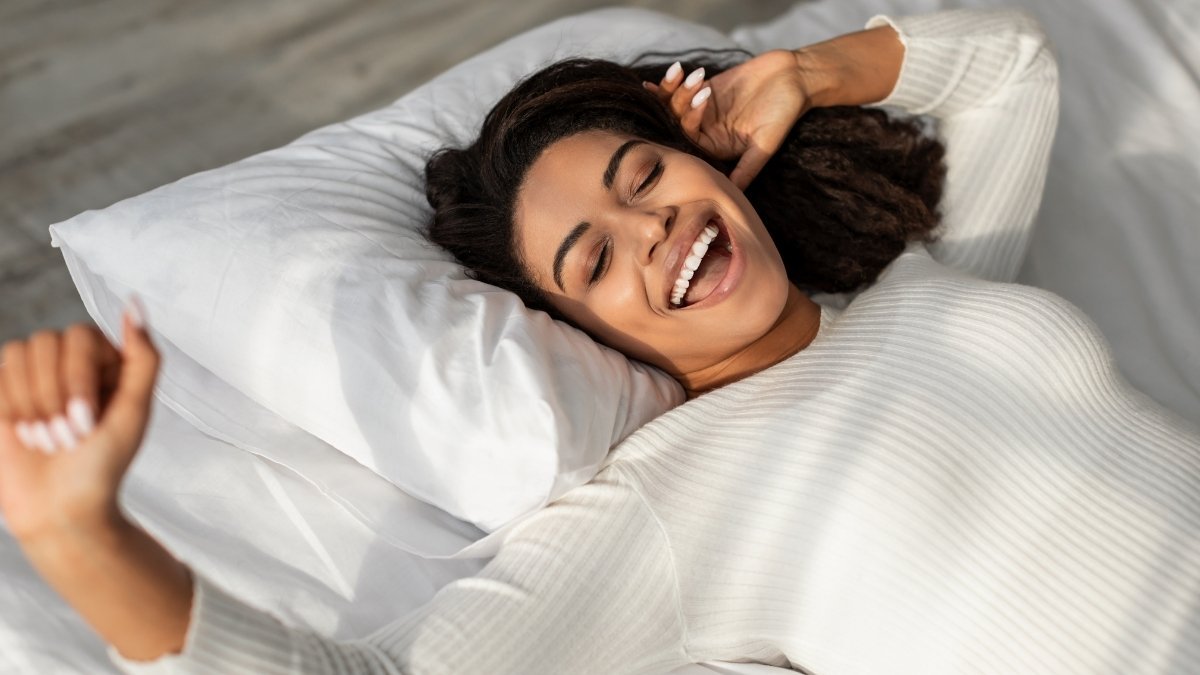
First, the light signal hits your SCN, which sends an urgent memo to your pineal gland to stop producing melatonin, the “hormone of darkness.”
You know that groggy, “I’m not really here” feeling when you first wake up in a dark room? That’s called “sleep inertia.” You’re basically still swimming in the melatonin from last night.
Morning light is the antidote. It slams the brakes on melatonin production, effectively “closing the gate” on sleep and telling your body, “The biological night is OVER.”
2. It Flips the “Focus” Switch ON (Hello, Cortisol)
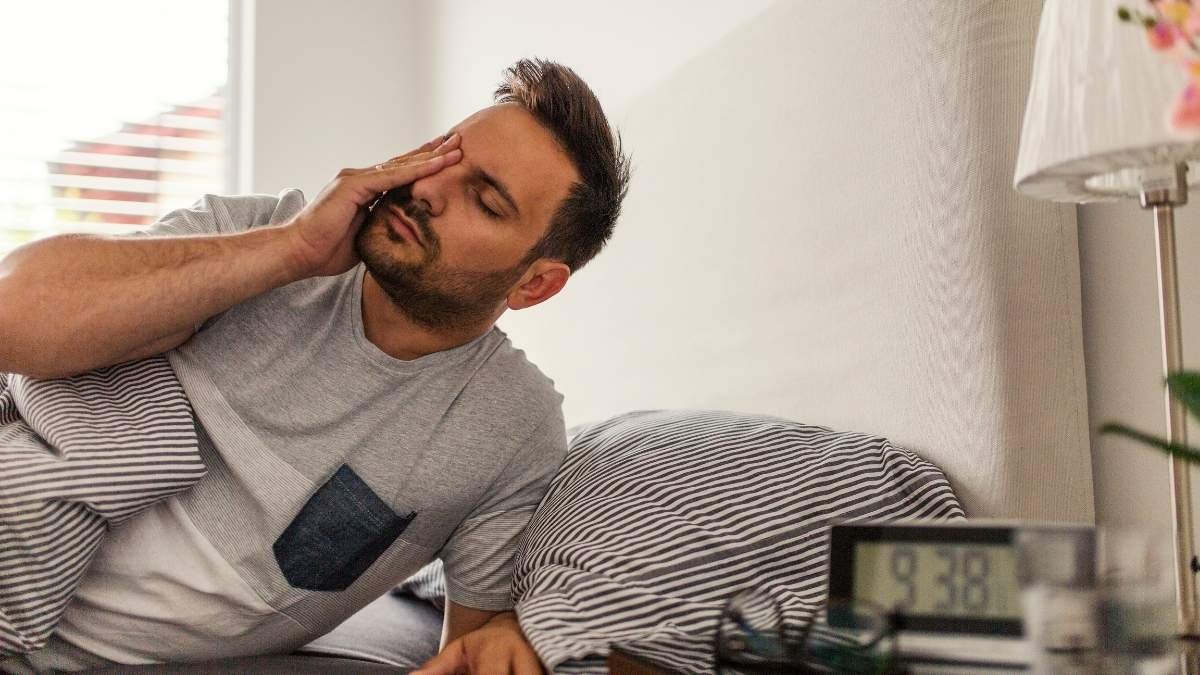
This is the part everyone gets wrong.
Cortisol has a bad rap as just the “stress hormone.” But a big, healthy pulse of it in the morning is your body’s natural “get up and go” signal. It’s your built-in shot of espresso. It’s what provides energy, enhances your immune system, and, most importantly, drives your ability to focus.
This healthy morning pulse is a well-documented event called the Cortisol Awakening Response (CAR). It’s a rapid 38% to 75% spike in your cortisol levels that’s supposed to happen, peaking about 30-45 minutes after you wake up.
A strong, high CAR is linked to high energy and focus. A “flat” or low CAR is related to fatigue, brain fog, and burnout.
And here is the secret to all-day focus: Morning light is the single most powerful tool to amplify your Cortisol Awakening Response.
When you get that bright light, you are commanding your body to produce the biggest, healthiest possible peak of this “focus hormone.” As neuroscientist Dr. Andrew Huberman says, viewing morning sunlight “increases early-day cortisol release… and will also positively influence your… ability to focus during the day.”
Want to have laser focus at noon? You need a huge cortisol spike at 7:30 AM.
Why Your Office Light Is (Biologically) Useless

“But wait,” you’re thinking. “I’m in a ‘bright’ room all day. I have my lights on.”
Here’s why that doesn’t work.
Your eyes have a secret set of sensors. They’re not the rods and cones you use for “seeing” (shapes, colors, this text). They’re a third class of photoreceptors called intrinsically photosensitive retinal ganglion cells (ipRGCs).
Think of these as light meters for your brain clock. They’re not for vision; they’re for measuring time.
And these special cells run on a pigment called Melanopsin. This pigment specifically seeks high-intensity, blue-to-cyan-spectrum light… which just so happens to be the exact kind of light most abundant in natural, overhead morning sunlight.
This is where the modern world fails us. This melanopsin system is waiting for a signal that our indoor lives never provide.
This is the part that blows most people’s minds. We measure light intensity in “lux.”
- Direct Sunlight: 100,000+ lux
- Overcast Day: 1,000 – 10,000 lux
- A “Bright” Indoor Office: 300 – 500 lux
- Typical Home Light: 25 – 50 lux
Look at that gap! A “bright” office is hundreds of times weaker than actual sunlight.
Even a “very dark,” heavily overcast day (at 1,000+ lux) is still 2-3 times more powerful than your “bright” office and 20-40 times more potent than your home.
As Dr. Satchin Panda, a leading circadian biologist, explains, “When we wake up… and spend most of the day indoors, the dim indoor light cannot fully activate melanopsin… making us feel sleepy and less alert.” 35
Your brain is literally waiting all day for a “wake up” signal it never receives. No wonder you’re tired.
How to Fix It: The 5 Morning Light Tricks
Okay, so how do we fix this? You just have to follow a few simple, non-negotiable rules to give your brain the signal it’s craving.
1. The “Critical Window” (Timing)
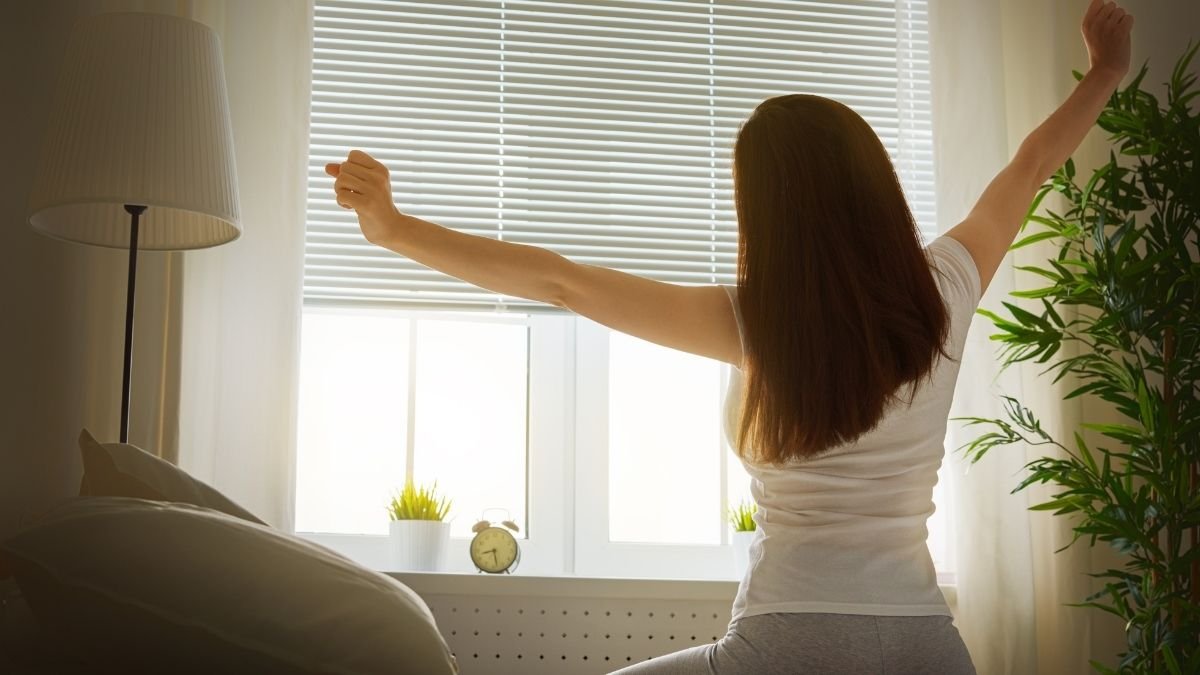
You must get this light exposure within the first 30-60 minutes of waking up. This is the “critical window” when your master clock is most receptive to this “reset” signal.
2. The “Dose-Response” (Duration)

How long? It depends on the weather. This is a “dose-response” game.
- Clear, Sunny Day: 5-10 minutes is all you need. That’s it.
- Partly Cloudy Day: 15-20 minutes.
- Heavily Overcast/Rainy Day: 30-60 minutes. And yes, it absolutely works on cloudy, miserable days.20 Remember the lux data: an overcast sky is massively more powerful than your indoor lights.
3. The “No Barriers” Rule (Method)

This is the one people get wrong. You must do this right.
- Go Outside: Do not try to get this light through a window or a car windshield. Glass, especially modern glass, filters out the exact blue wavelengths your brain’s melanopsin sensors are looking for. It kills the signal.
- No Sunglasses or Visors: The light has to get into your retinal cells. Don’t wear sunglasses, a visor, or a brimmed hat that shields your eyes. (Regular eyeglasses or contact lenses are perfectly fine.)
- Safety First: Never look directly at the sun. You’re not “sun-gazing.” Just be outside. Face the general direction of the sun, read a book, drink your coffee, and let the ambient light do its job.
4. The “Second Anchor” (The Afternoon Bonus)

If you want to really lock in your clock, here’s a pro-tip: get outside again for 5-10 minutes in the late afternoon or early evening.
This gives your brain a second “anchor point.” The specific low-angle light (more yellows and oranges) communicates that the day is ending. This makes your 24-hour cycle even more precise and can even help “reduce some… of the ill effects” of staring at your phone later that night.
5. The “Fake Sun” (The Backup Plan)

What if you wake up at 4:30 AM before the sun? What if you live in a place with dark winters?
You use a “fake sun.”
A 10,000 lux light therapy lamp is the scientifically backed solution.
- Does it work? This is the first-line treatment for Seasonal Affective Disorder (SAD), a condition affecting about 5% of US adults (with another 14-20% getting the “winter blues”).
- The Stats: But it’s not just for mood. One study of office workers found that 5 days of bright morning light exposure led to a 79% improvement on cognitive tests. And a major 2024 JAMA Psychiatry review found light therapy had a 41% remission rate for non-seasonal depression (compared to 23% for placebo). This stuff is powerful.
- How to Use It: Get a lamp that is 10,000 lux and UV-free. Place it 16-24 inches from your face, offset to the side (like the sun). Use it for 20-30 minutes while you eat breakfast or check emails. Do not stare directly into it.
Your Morning Light “Cheat Sheet”
Here’s a simple table to lock it in.
🌞 Optimal Morning Light Exposure Protocol 🧠
Key Mechanisms for Circadian Rhythm & Energy
| SCENARIO 🌤️ | LIGHT SOURCE | RECOMMENDED INTENSITY | REQUIRED DURATION | KEY MECHANISM ACTIVATED | EXPERT PROTOCOL SOURCE |
|---|---|---|---|---|---|
| Clear Sunny Morning | Natural Sunlight | 100,000+ lux | 5 – 10 minutes | Max. Melatonin Suppression / Max. CAR Amplificatio | Huberman, Panda |
| Cloudy / Overcast Morning | Natural Sunlight | 1,000 – 10,000 lux | 15 – 30 minutes | Sufficient Melatonin/CAR signal (Dose-dependent) | Huberman |
| Very Dark / Rainy Morning | Natural Sunlight | ≈1,000 lux | 30 – 60 minutes | Reaching threshold for SCN activation | Huberman |
| Pre-Sunrise / Dark Winter | Artificial Light Box | 10,000 lux | 20 – 30 minutes | Artificial SCN activation / SAD prevention | Rosenthal, CET, Huberman |
| Office/Indoor Worker (Warning) | Bright Indoor Light | ≈300-500 lux | Not sufficient | Fails to fully activate melanopsin | Panda |
| Afternoon Energy “Anchor” | Natural Sunlight (low angle) | Varies (specific wavelengths) | 5 – 10 minutes | Reinforces SCN timing / “Confirms” time of day | Huberman |
Busting a Few Myths Before You Go…
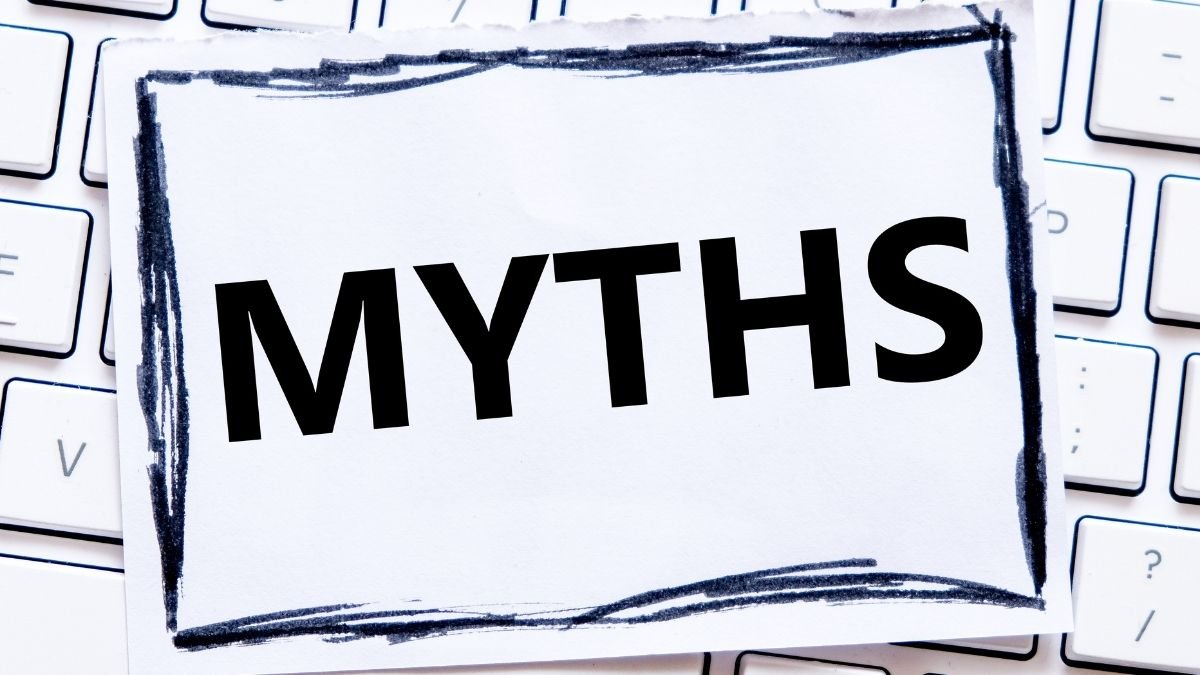
I know what you’re thinking. It can’t be that simple. Let’s clear up a few common myths.
- Myth 1: “My bright phone screen is enough to wake me up.”
- Correction: Nope. Not even close. While your phone is rich in blue light, it has zero of the intensity (lux) needed to set your clock. A phone screen is “noise”; morning sunlight is a “signal.” The mantra “sunlight before screen light” is biologically sound.
- Myth 2: “It’s pointless to go outside on a cloudy day.”
- Correction: False. We busted this, but it’s so important I’ll say it again. A dark, rainy, overcast day is still 2-3 times brighter (or more!) than your “bright” indoor office. It will work. You just need to stay out a little longer.
- Myth 3: “Coffee is a replacement for light.”
- Correction: This is a big one. False. They work on two completely different systems.
- Light: Builds a real foundation of alertness by triggering your Cortisol Awakening Response.
- Caffeine: Masks a sleepiness signal (called adenosine) by blocking its receptors in your brain.
- Relying only on caffeine is “biologically fraudulent.” You’re just borrowing energy, and the crash will come when the caffeine wears off. Light, on the other hand, creates energy. This is why many experts suggest delaying your first coffee for 90-120 minutes after waking. Let your real energy system (the CAR) peak first, then use caffeine.
- Myth 4: “This is the same as Red Light Therapy, right?”
- Correction: False. Different tools for different jobs.
- Bright Light Therapy (BLT): Uses very bright, white light (containing blue) to talk to your brain clock (SCN).
- Red Light Therapy (RLT): Uses much dimmer, red/infrared light to talk to your body’s cells (mitochondria) for skin health and inflammation.
- One is for your brain, the other is for your skin and muscles. Don’t mix them up.
A Quick (But Important) Word of Warning

Light is medicine. Treat it with respect. While it’s incredibly safe, there are a few “Don’t Do This” warnings.
- Side effects from a lamp are usually mild and mean you did too much, too soon: headaches, eye strain, or feeling “hyper-wired”. Just reduce the time or sit further away.
- Who MUST Be Cautious:
- Bipolar Disorder: For individuals with bipolar disorder, bright light therapy is a known and potent trigger for mania or hypomania. Do not do this without a psychiatrist’s supervision.
- Eye Conditions: If you have retinal damage, macular degeneration, or other photosensitive eye conditions, talk to your ophthalmologist first.
- Photosensitizing Medications: Some antibiotics, antipsychotics, and even the herbal supplement St. John’s Wort can make you highly sensitive to light. Check with your doctor.
Need More Help? A Few Tools for the Darkest Mornings
Look, I get it. “Just go outside” is easy to say, but it’s not always realistic. Maybe you wake up at 5 AM when it’s still pitch black, or you live somewhere with long, dark winters. That’s where the “backup plan” we talked about—the “fake sun”—comes in. If you’re going to buy a light therapy lamp, you need to make sure it does the one thing that matters: deliver 10,000 lux of UV-free light. That’s the clinical standard for tricking your brain. Here are a few well-regarded options.
1. Verilux HappyLight Luxe

This one is a popular pick, and for good reason. It delivers the required 10,000 lux (UV-free) and gives you a ton of control, letting you adjust both the color temperature (from warm to daylight) and the brightness, so you can find what feels right for you. It also has a timer you can set.
2. Circadian Optics Lampu
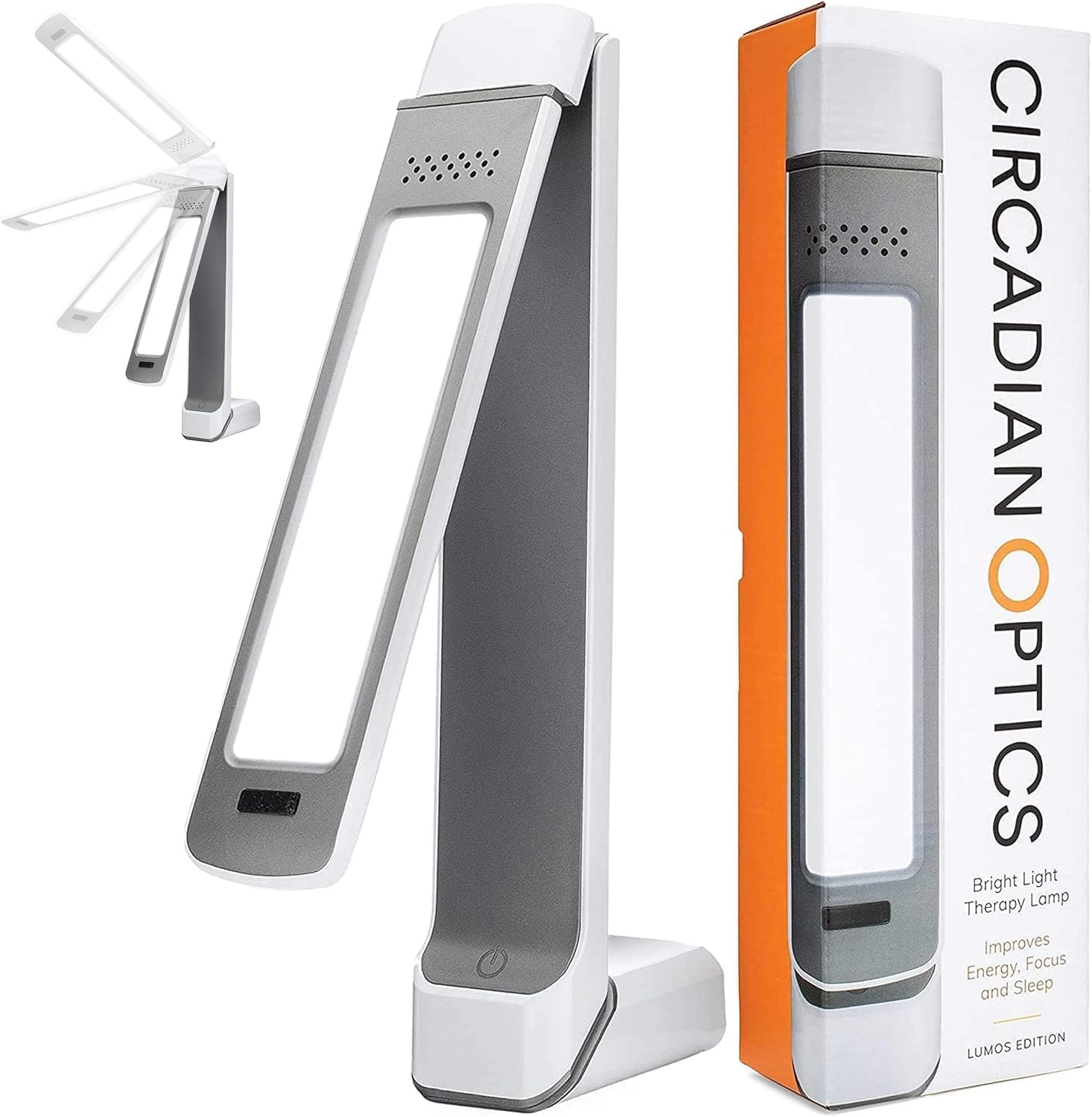
If you care about how your desk looks, this one has a unique, modern design that doesn’t scream “therapy device”. It hits the 10,000 lux mark, is UV-free, and is designed to be placed just off to the side while you work or eat breakfast, with most users feeling a difference within a week.
3. Lumie Vitamin L
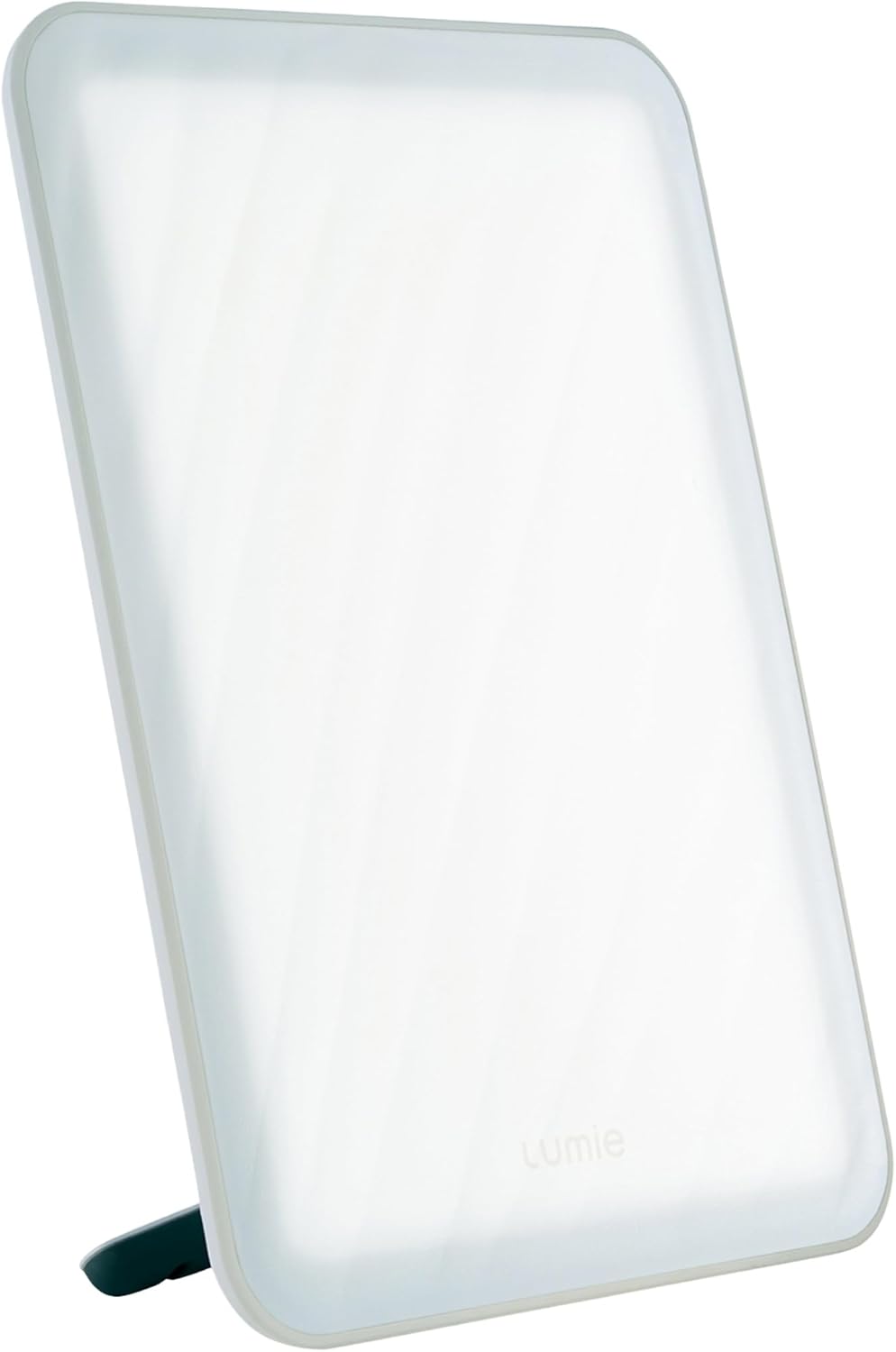
This one is slim, light, and portable, making it great for taking to the office or college. It delivers 10,000 lux and uses a “rippled diffuser,” which helps create a softer, more comfortable light that’s less of a harsh glare in the morning.
4. Carex Day-Light Classic Plus

This is one of the “heavy hitters.” It’s trusted by experts and has been used in clinical studies. Its main feature is a huge 16″ x 13″ screen that’s designed to project light downward at an angle, which is a more natural way to mimic the sun. It’s a great choice if you’re looking for a powerful, no-nonsense option.
5. Beurer TL30

If you want something simple and portable, this is a great budget-friendly option. It’s about the size of a tablet, so you can easily move it from your kitchen counter to your desk. It delivers the standard 10,000 lux in a compact, no-frills package.
The Takeaway
The evidence is clear. That 2 PM brain fog, that midday slump, that feeling of being “off”—it’s not a moral failing. It’s a “light deficiency”.
“Focus by noon” is a direct, predictable, neurochemical outcome of “light by 7 AM.”
You have direct, executive control over the fundamental systems that govern your alertness and energy for the entire day. You just have to prove to your ancient brain that the day has, in fact, begun.
The most powerful productivity tool in the world isn’t an app or a supplement. It’s free, and it’s waiting for you right outside.






